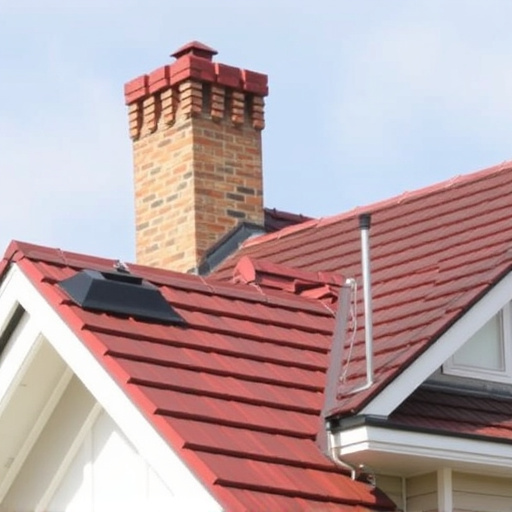Understanding your carbon footprint is crucial for making sustainable choices, especially in roofing. Opt for eco-friendly materials like metal roofs, slate, or hybrid systems with solar tiles to reduce environmental impact and energy costs. Professional advice can guide you towards the best options tailored to your location and needs. High insulation values, cool roof technologies, and efficient underlayments significantly lower carbon emissions and energy consumption. Local regulations often encourage sustainable practices with incentives like tax credits for eco-friendly roofing. Case studies show successful green roofing in diverse settings, reducing costs and environmental impact. Regular maintenance is vital for slate roofs, while wood shake roofs need proper upkeep to stay sustainable.
Reducing your carbon footprint starts from above—your roof. In today’s environmental consciousness, understanding and mitigating your building’s carbon emissions is paramount. This article explores how choosing the right roofing materials and designs can significantly reduce your carbon footprint. From traditional to sustainable alternatives, energy-efficient options, and local incentives, we guide you through every step of the process. Learn how insulation, cool roofs, and eco-friendly choices contribute to a greener future, starting with yours.
- Understanding Your Carbon Footprint: The Role of Roofing
- Traditional Roofing Materials and Their Environmental Impact
- Sustainable Alternatives: Exploring Eco-Friendly Roofing Options
- Energy Efficiency: How Roof Design Contributes to Lower Emissions
- Choosing the Right Insulation for a Greener Roof
- The Benefits of Cool Roofs in Reducing Carbon Emissions
- Longevity and Durability: Investing in Environmentally Friendly Roofs
- Local Regulations and Incentives for Sustainable Roofing Practices
- Case Studies: Successful Implementations of Green Roofing Technologies
- Tips for Homeowners: A Step-by-Step Guide to Lowering Your Carbon Footprint with Roofing
Understanding Your Carbon Footprint: The Role of Roofing
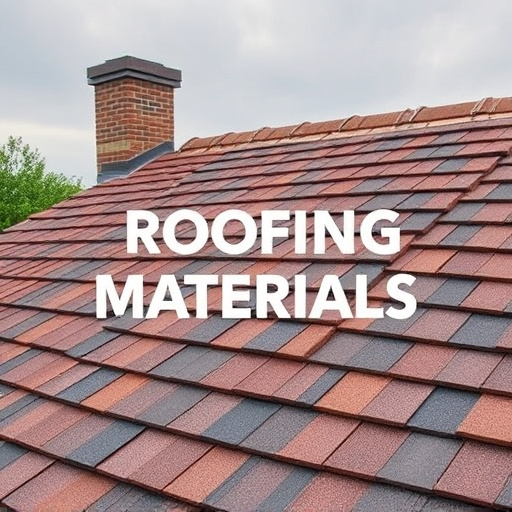
Understanding your carbon footprint is a crucial step in making sustainable choices, and your roof plays a significant role in this. The materials used for roofing can significantly impact your home’s environmental impact. According to experts, the process of manufacturing and installing certain roofing materials contributes to a substantial carbon footprint. Therefore, choosing eco-friendly roofing options is an effective way to reduce yours.
When considering roofing materials, opt for those that are based on climate, durable, and have a lower environmental impact. Hybrid roofing systems for homes, for instance, offer innovative solutions by combining traditional materials with sustainable alternatives. The best durable roofing options available today can provide long-lasting protection while minimizing waste and energy consumption. Additionally, professional roofing estimate tips suggest that consulting experts in the field can help you make informed decisions tailored to your specific needs and location.
Traditional Roofing Materials and Their Environmental Impact

Traditional roofing materials often contribute significantly to a home’s carbon footprint. Concrete and asphalt shingles, commonly used, have high embodied energy due to their production processes, requiring vast amounts of fossil fuels. Moreover, they can trap heat, leading to increased energy consumption for cooling. When considering Choosing Roofing Materials, it’s crucial to look beyond aesthetics and durability and factor in environmental impact.
Modern metal roofing designs offer an eco-friendly alternative with lower slate roofing costs vs. benefits. Metal roofs are highly durable and require less maintenance over time. They reflect sunlight, reducing heat absorption and thereby lowering energy usage. Local roofing material recommendations often include these energy-efficient roofing solutions as part of sustainable building practices. Additionally, wood shake roofs, while natural, require meticulous maintenance, adding to their environmental footprint.
Sustainable Alternatives: Exploring Eco-Friendly Roofing Options
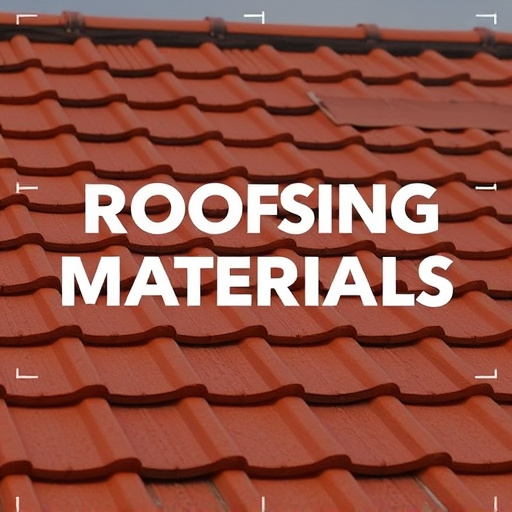
When it comes to reducing your carbon footprint, choosing roofing materials plays a significant role in your home’s sustainability. Opting for eco-friendly options can contribute to energy efficiency and lower environmental impact. Sustainable alternatives like slate roofing offer long-lasting durability while providing excellent insulation, reducing heating and cooling costs. The initial slate roofing costs may be higher, but their longevity makes them a cost-effective choice over time.
Hybrid roofing systems for homes combine traditional materials with cutting-edge technology. These systems can include energy-efficient components like solar tiles or photovoltaic shingles, integrating renewable energy generation directly into your roof. Moreover, rooftop garden systems have gained popularity as an innovative solution. They not only reduce the urban heat island effect but also provide additional insulation and can contribute to local biodiversity by creating habitats for birds and insects, all while minimizing a home’s carbon footprint in alignment with climate-conscious considerations.
Energy Efficiency: How Roof Design Contributes to Lower Emissions
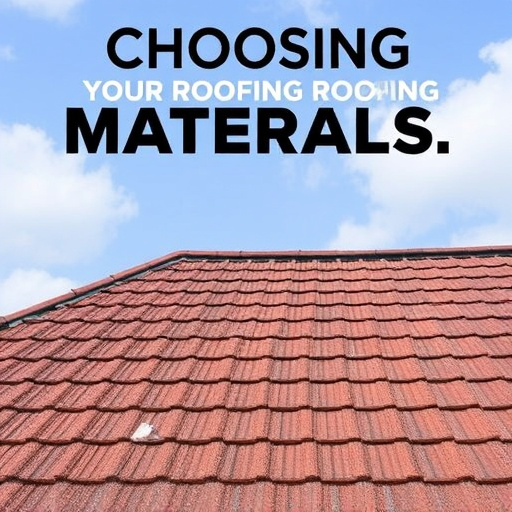
Roof design plays a significant role in energy efficiency and reducing carbon footprints, as it can significantly impact a building’s heating and cooling emissions. One of the most effective ways to lower energy consumption is by considering the insulation properties of roofing materials. Choosing efficient roofing solutions can create an energy barrier, preventing heat loss during winters and keeping buildings cool in summers. This simple yet powerful strategy translates to substantial cuts in greenhouse gas emissions over time.
When it comes to choosing roofing materials, there’s a flat roof materials comparison that reveals modern metal roofing designs as top performers in insulation. These durable options not only reduce energy costs but also offer a long-lasting solution, minimizing the need for frequent replacements. Additionally, local roofing material recommendations often include eco-friendly choices like recycled metal or cool roofs, which reflect sunlight, further enhancing energy efficiency.
Choosing the Right Insulation for a Greener Roof
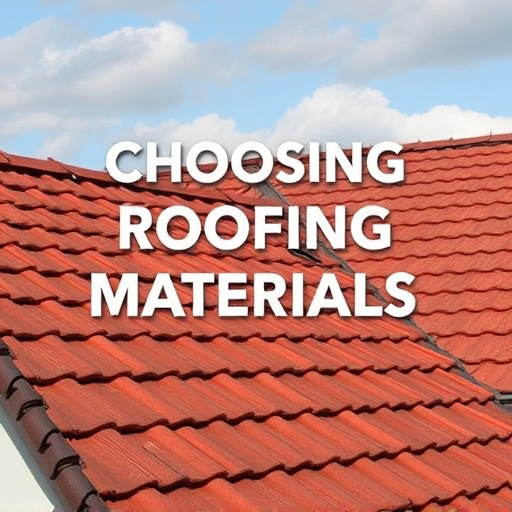
When considering how to reduce your carbon footprint with roofing, one of the most effective steps is choosing the right insulation. Insulation plays a crucial role in energy efficiency, helping to regulate indoor temperatures and reduce reliance on heating and cooling systems. Opting for high-R value insulation materials can significantly lower your energy consumption and, consequently, your carbon emissions.
In a flat roof materials comparison, various eco-friendly options stand out. For instance, recycled paper insulation and cellulose insulation are excellent choices due to their superior insulating properties and low environmental impact. Additionally, when it comes to fire safety, many modern fire-resistant roofing systems incorporate advanced materials that not only protect against flames but also contribute to a greener building envelope. Seeking professional roofing estimate tips can help guide your decision towards the most suitable and sustainable insulation for your needs.
The Benefits of Cool Roofs in Reducing Carbon Emissions
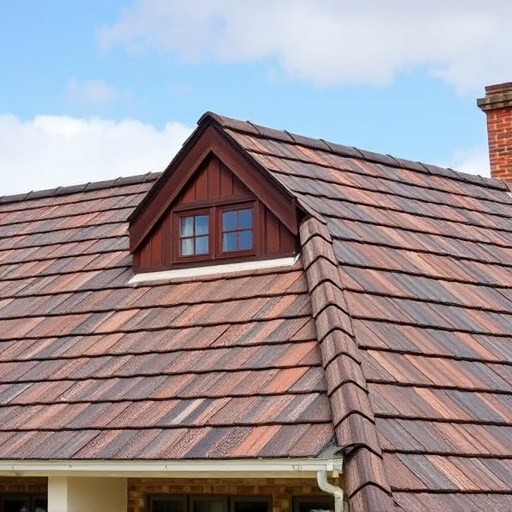
Cool roofs have emerged as a powerful tool in the fight against climate change, offering significant benefits in reducing carbon emissions. By reflecting sunlight and keeping buildings cooler, these innovative roofing solutions help to decrease energy consumption for air conditioning, leading to lower greenhouse gas outputs. This is particularly advantageous in urban areas where the ‘urban heat island’ effect is prominent, contributing to higher local temperatures and increased energy demands.
When choosing roofing materials, opting for cool roofs can be a game-changer. Traditional dark shingles absorb sunlight, warming the building below and exacerbating energy usage. In contrast, long-lasting roof material choices like reflective tiles or white membranes significantly cut down on heat absorption, making them slope-dependent roofing options that are environmentally friendly without compromising durability. Selecting the right roof underlayment can further enhance these benefits, ensuring a comfortable indoor temperature while minimizing the carbon footprint associated with energy-intensive cooling systems.
Longevity and Durability: Investing in Environmentally Friendly Roofs
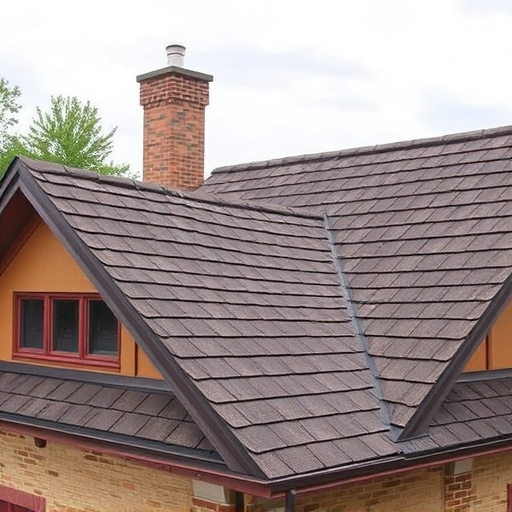
Investing in environmentally friendly roofing materials is a strategic move that offers more than just aesthetic benefits. Longevity and durability are key aspects when choosing roofing solutions, especially if you’re aiming to reduce your carbon footprint. Sustainable roofing options like reflective roof coatings or green roofing systems not only minimize energy consumption but also enhance the overall longevity of your roof.
By selecting materials that require less frequent replacement, you decrease the demand for new resources and reduce waste, thereby lowering your carbon emissions. Fire-resistant roofing systems, for instance, can withstand extreme conditions, reducing the risk of structural damage and the need for frequent repairs or replacements. Additionally, tile roofing maintenance hacks can help extend the life of traditional tiles, allowing them to retain their quality for years, while choosing green roofing options contributes to a healthier environment by encouraging biodiversity and improving local ecosystems.
Local Regulations and Incentives for Sustainable Roofing Practices

Many regions are implementing local regulations and incentives to encourage the adoption of sustainable roofing practices. These initiatives often include specific guidelines for Choosing Roofing Materials that have lower environmental impacts, such as those made from recycled content or renewable resources. Tax credits, rebates, and other financial benefits can make these eco-friendly roofing alternatives more accessible and cost-effective for homeowners and businesses.
When considering a roof replacement or repair, it’s important to explore the professional roofing estimate tips that factor in sustainability. Evaluating options like replacing vs. repairing an existing roof can help reduce your carbon footprint. By opting for environmentally conscious materials and methods, you contribute to a greener future while also potentially saving on energy costs associated with heating and cooling.
Case Studies: Successful Implementations of Green Roofing Technologies

In recent years, numerous successful case studies have demonstrated the effectiveness of implementing green roofing technologies in various settings. These innovative approaches not only contribute to aesthetic appeal but also play a significant role in reducing carbon footprints and promoting sustainability. For instance, urban areas have embraced hybrid roofing systems that seamlessly integrate vegetation with traditional roofing materials, such as asphalt shingles or tile roofs. This eco-friendly practice provides insulation, absorbs rainwater, and reduces the urban heat island effect.
When choosing roofing materials based on climate considerations, professionals are increasingly opting for resilient options that can withstand extreme weather conditions. Wood shake roofs, though popular for their rustic charm, require meticulous maintenance to prevent rot and insect infestation. In contrast, resistive roofing materials offer superior durability and protection against harsh storms, making them a preferred choice in regions prone to severe weather events. Additionally, asphalt shingles have long been the go-to option due to their affordability and ease of installation, but they contribute to a larger carbon footprint compared to other sustainable alternatives.
Tips for Homeowners: A Step-by-Step Guide to Lowering Your Carbon Footprint with Roofing
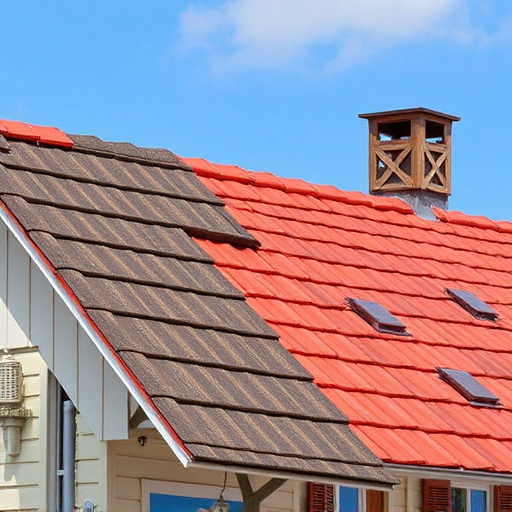
Reducing your carbon footprint doesn’t have to be complex—even small changes around your home can make a significant impact. One often-overlooked area for improvement is your roofing system. Here’s how homeowners can take charge and contribute to a greener planet through smart roofing choices.
A crucial step is choosing roofing materials that align with eco-friendly values. Opting for energy-efficient options like metal or cool roofs can reflect sunlight, thereby reducing the need for excessive cooling. Alternatively, consider rooftop garden systems benefits, which not only lower carbon emissions but also provide insulation and a peaceful green space. While energy efficient roofing solutions might have higher upfront costs, they pay off in the long run through reduced utility bills and minimized environmental impact. If you’re already invested in slate roofing, remember that while it can be pricey, its longevity makes it a worthwhile choice. Yet, be mindful of the wood shake roofs: maintenance tips—regular upkeep ensures their effectiveness as a sustainable option.
Reducing your carbon footprint through roofing isn’t just an eco-friendly choice; it’s a strategic investment in a sustainable future. By understanding your current footprint and exploring options like energy-efficient designs, eco-friendly materials, and proper insulation, you can play a significant role in mitigating climate change. Choosing the right roofing materials can substantially impact your home’s environmental performance, making it a crucial decision for anyone looking to lower their carbon emissions and contribute to a greener world.
